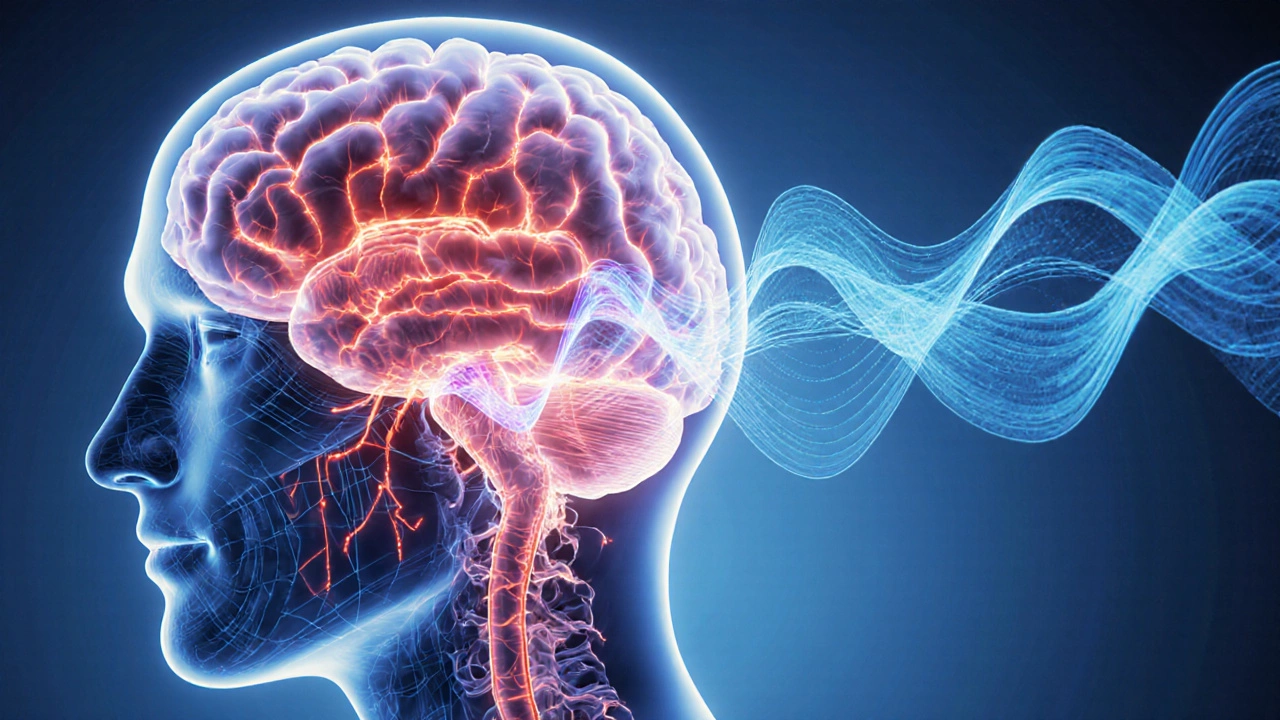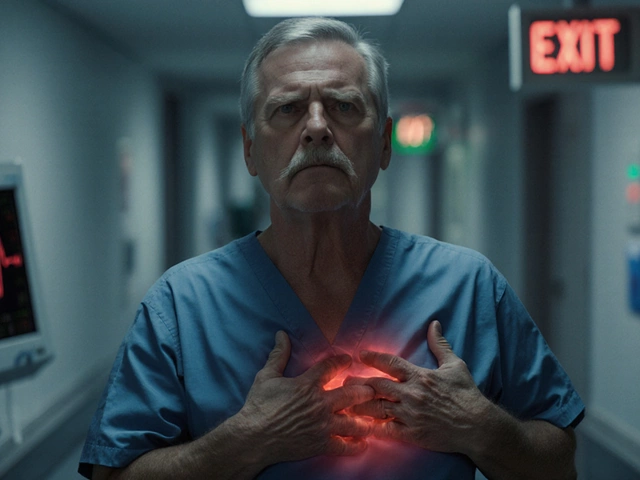For years, people with chronic pain were told it was permanent-something you just had to live with. Pills, injections, and surgeries offered temporary relief, but the pain always came back. That story is changing. New research shows chronic pain isn’t just a symptom. It’s a learned response in your nervous system. And if it’s learned, it can be unlearned.
Chronic pain isn’t damage-it’s a false alarm
Most people think chronic pain means something’s still broken. A bad back, worn-out knees, or an old injury. But here’s the truth: after tissues heal, pain shouldn’t keep going. When it does, it’s not because the damage is still there. It’s because your nervous system got stuck in overdrive.
Think of it like a smoke alarm that won’t shut off-even when there’s no fire. The alarm isn’t broken. It’s just too sensitive. In chronic pain, nerves in your spine and brain start firing signals even when there’s no real threat. This isn’t weakness. It’s biology. Studies from the University of Oxford and the NIH show that in people with long-term back pain, the brain’s pain-processing areas become hyperactive, even without physical injury.
Reversing chronic pain starts with rewiring your brain
Neuroplasticity isn’t just a buzzword. It’s the reason reversal is possible. Your brain changes based on what you do, think, and feel. If constant pain has trained your brain to expect pain, you can train it to expect safety instead.
One of the most effective methods is graded motor imagery. It sounds complicated, but it’s simple: you use mental exercises to retrain your brain’s map of your body. For example, people with chronic leg pain might start by looking at pictures of left and right feet and identifying which is which. Then they imagine moving the foot without actually moving it. Over weeks, this reduces the brain’s fear response to movement.
Another proven approach is mindfulness-based stress reduction. A 2023 study in JAMA Neurology found that participants who practiced 20 minutes of daily mindfulness for eight weeks reduced their pain intensity by 30%-comparable to the effect of strong painkillers, but without side effects. Why? Because mindfulness doesn’t block pain. It changes how your brain relates to it.
Movement is medicine-not the enemy
Rest used to be the go-to advice. But avoiding movement makes pain worse. When you stop using a painful area, your muscles weaken, your joints stiffen, and your brain learns to associate movement with danger. That’s why many people with chronic pain end up in a cycle: pain → avoid activity → more pain.
Reversal means moving differently-not harder. Gentle walking, swimming, tai chi, or yoga are not just safe-they’re essential. The key is consistency, not intensity. A 2024 clinical trial at Johns Hopkins followed 400 people with chronic lower back pain. Those who walked 30 minutes, five days a week, for 12 weeks saw a 45% drop in pain levels. Not because their backs were magically fixed. Because their nervous system learned that movement was safe again.

Emotions aren’t just in your head-they’re in your nerves
Stress, anxiety, and unresolved trauma don’t just make pain feel worse. They physically change how your nervous system works. The vagus nerve, which connects your brain to your organs, becomes less active under chronic stress. That means less calming signals reach your pain pathways.
People who’ve reversed chronic pain often report doing emotional work alongside physical rehab. That doesn’t mean you need years of therapy. Simple practices like journaling about how pain affects your life, or talking to a trained counselor about past trauma, can lower pain signals. A 2022 study in Pain Medicine showed that patients who combined physical therapy with one session of trauma-focused therapy per month cut their pain medication use in half within six months.
Medications help-but they don’t fix the root
Opioids, NSAIDs, and nerve blockers can give you breathing room. But they don’t rewire your brain. Long-term opioid use actually makes pain more sensitive over time-a condition called opioid-induced hyperalgesia. That’s why doctors now recommend using them only short-term, if at all.
Instead, focus on what supports healing: magnesium for nerve calming, vitamin D for inflammation control, and omega-3s to reduce nerve sensitivity. These aren’t magic cures. But when paired with movement and mindset work, they create the right environment for your nervous system to reset.
What doesn’t work-and why
Some treatments promise quick fixes but don’t deliver long-term results:
- Spinal injections: May reduce inflammation temporarily, but rarely change pain patterns long-term.
- Surgeries for back pain: Only helpful if there’s a clear structural issue like a herniated disc pressing a nerve. Most chronic back pain has no such cause.
- Extreme rest or bracing: Weakens muscles and trains your brain to fear movement.
- Just taking pills: Doesn’t address the nervous system’s learned response.
The common thread? These approaches treat pain as a physical problem. But chronic pain is a brain-body loop. Break the loop, and the pain fades.
Real people, real results
Jamie, 52, had sciatica for seven years. She tried epidurals, physical therapy, even acupuncture. Nothing stuck. Then she joined a pain rehabilitation program that combined daily walking, mindfulness, and education about how pain works. Within four months, she stopped taking painkillers. At 18 months, she hiked a mountain trail she hadn’t touched since her injury.
Marcus, 38, suffered from fibromyalgia after a car accident. He was told he’d never work full-time again. He started with 10 minutes of gentle stretching each morning. He added journaling about his emotions. He learned his pain spiked when he felt powerless. Over a year, he rebuilt his routine. Now he runs a small business and sleeps through the night.
They didn’t get lucky. They followed a science-backed path: reduce fear, move gently, calm the nervous system, and rebuild confidence.
How to start reversing your chronic pain
You don’t need to do everything at once. Start here:
- Learn how pain works: Read The Pain Science Handbook or watch free videos from the NOI Group. Understanding reduces fear.
- Move a little every day: Walk 10 minutes. Stretch for 5. Swim. Dance. Just move without pushing into pain.
- Practice mindfulness: Use a free app like Insight Timer. Focus on your breath for 5 minutes daily.
- Track your triggers: Keep a simple log: pain level (1-10), what you did, how you felt emotionally. Patterns will emerge.
- Find a pain specialist: Look for a physical therapist or doctor trained in pain neuroscience-not just orthopedics. They’ll guide you through rewiring.
Reversal isn’t about becoming pain-free overnight. It’s about regaining control. It’s about your nervous system learning, slowly and safely, that you’re not in danger.
Is reversal possible for everyone?
Not every person will eliminate pain completely. But almost everyone can reduce it enough to live fully again. The key isn’t how long you’ve had pain. It’s whether you’re willing to retrain your brain. The longer pain lasts, the more work it takes. But it’s never too late.
Chronic pain is not your identity. It’s a signal your body sent-and your brain misinterpreted. You can change that signal. You’ve already taken the first step by asking this question.
Can chronic pain be completely reversed?
Yes, in many cases. While not everyone becomes completely pain-free, most people can significantly reduce their pain levels and regain function. Reversal means retraining the nervous system so it no longer overreacts to harmless signals. People with chronic pain lasting decades have returned to work, exercise, and daily life after following neuroscience-based rehab programs.
How long does it take to reverse chronic pain?
There’s no fixed timeline. Some people notice changes in 4-6 weeks with consistent daily habits. For others, especially those with pain lasting over 10 years, it can take 6-18 months. Progress is often slow at first, then accelerates once the brain starts to trust movement again. The key is consistency-not speed.
Do I need to stop all pain medication?
No, but you should work with a doctor to reduce dependence over time. Medications can help you get to a point where you can start rehab. But relying on them long-term can make your nervous system more sensitive. Many people gradually lower their doses as movement, mindfulness, and education take effect.
Is chronic pain all in my head?
No. The pain is real-but the cause isn’t always tissue damage. Your brain creates the experience of pain based on signals, memories, emotions, and beliefs. That doesn’t mean it’s imaginary. It means your nervous system has become overly protective. The goal isn’t to ignore pain. It’s to help your brain understand you’re safe now.
What’s the best exercise for chronic pain?
The best exercise is one you’ll do regularly without fear. Walking, swimming, cycling, tai chi, and yoga are all excellent. Start with 5-10 minutes a day. Focus on smooth, controlled movements. Avoid pushing into sharp pain. The goal isn’t to burn calories or build muscle-it’s to teach your brain that movement is safe.
Can stress make chronic pain worse?
Yes. Stress triggers the fight-or-flight response, which increases nerve sensitivity and muscle tension. People with chronic pain often report worse symptoms during high-stress periods. Managing stress through breathing, sleep, therapy, or hobbies directly reduces pain signals. It’s not a distraction-it’s a biological reset.
Will I need lifelong treatment?
No. Once your nervous system learns safety, you won’t need ongoing therapy. Like learning to ride a bike, the skill sticks. You might still have occasional flares, but you’ll know how to manage them. Most people who reverse chronic pain eventually stop formal treatment and rely on the habits they built-movement, mindfulness, and self-awareness.




